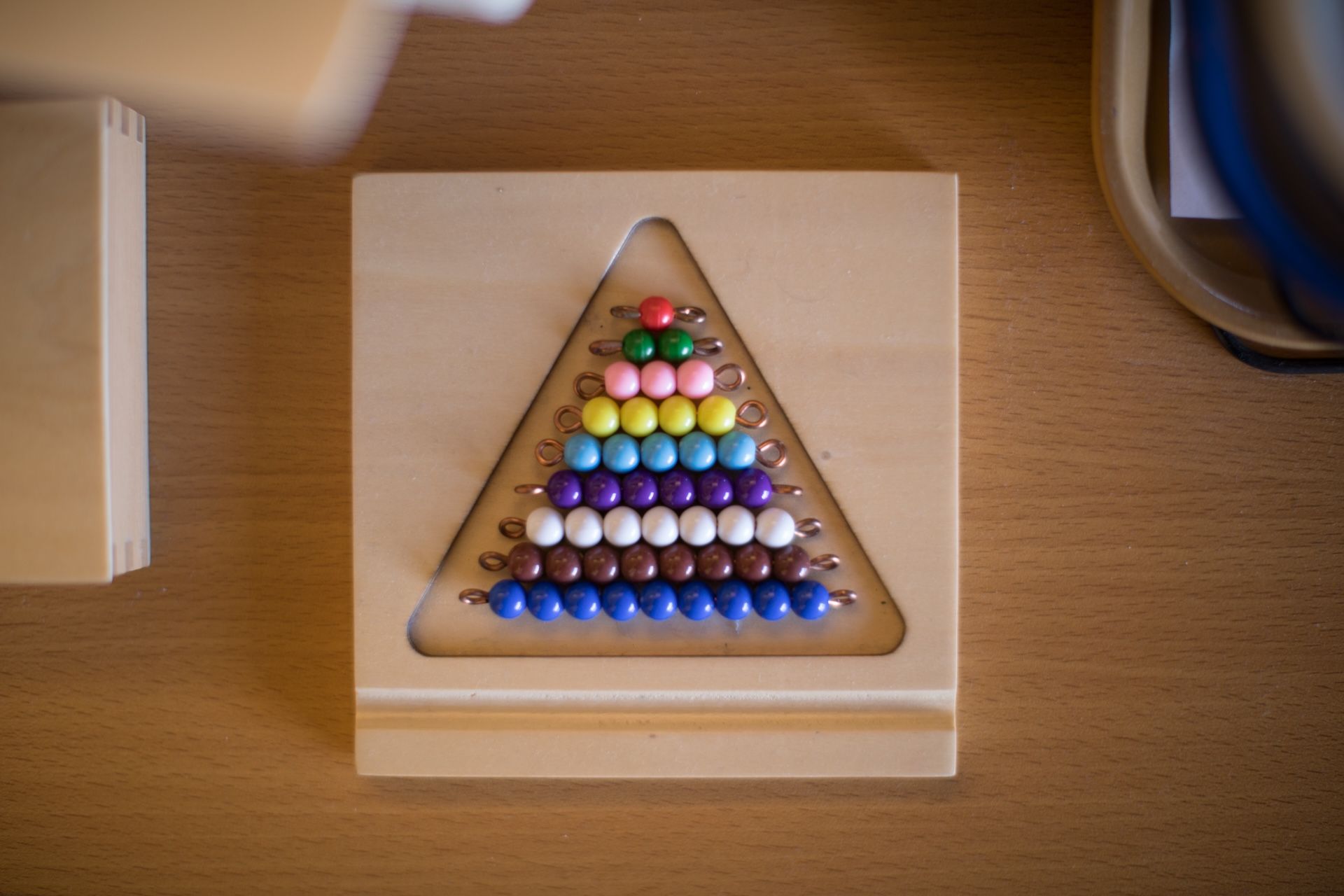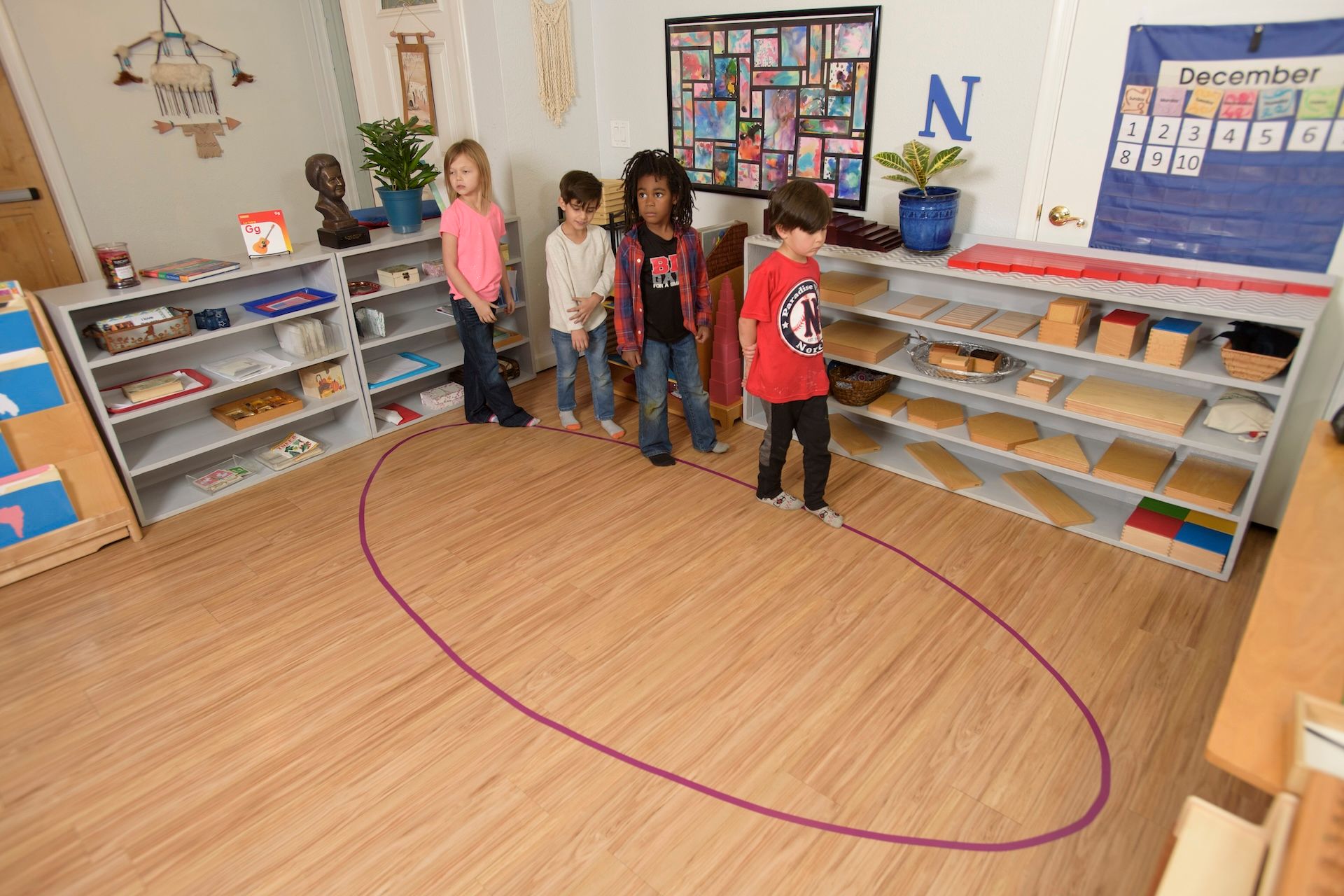A big part of Montessori education is helping children understand “practical life skills”—cleaning, dressing, preparing food—far younger than in the traditional education system. Home economics can’t wait until middle school! Recent studies show that young adults (25-29) don’t know how to cook, sew, or conduct home repairs nearly as well as older generations.

This missing information is far more critical than they know. The earlier your child starts to gain independence in the kitchen, the more likely they are to be industrious young adults. Schooling has a big impact on how kids learn and grow but the reinforcement at home is always most critical in fostering long-term success. Montessori doesn’t use homework per se but encourages at-home activities that further exploration.
You can help by creating a routine of practical responsibilities for your children. One of the most important places to learn is in the kitchen. There are a million little things to learn and the shapes, smells, and textures can keep kids occupied for hours on end.
Introduction
Transferring : this is a really simple activity that adults take for granted and can help children refine their motor skills. Instead of sweeping everything off the cutting board into a bowl, give your kid a pair of tongs and set them to work. They’ll carefully move each piece using the instrument from board to bowl while you can finish other things without worrying.
Peeling Eggs: If you have eggs to hard boil, let your toddler take care of the peeling! Little fingers can grasp the eggs and carefully remove their shells.
Balling Melons: Give your child this tiny, dulled contraption and let them scoop out individual balls of different types of melons. These can be for fruit salad or as a snack to eat soon. The soft flesh of the fruit is easy to cut through and the uniform results will please your child.
Intermediate
Stirring : easy to demonstrate but a little more complex, you can take your time in perfecting their technique. Show your kids the deliberate motions, scraping the sides and incorporating all of the ingredients. They can stir flour during baking and help mix up salads—but be extra cautious around the stove.
Choppers and Slicers : give your kids pre-knife exposure to uniform cutting and slicing. There are tons of handy gadgets and implements designed to make slicing easier that don’t involve blades. Egg slicers can be used for mushrooms or other soft foods. Special devices cut bananas , strawberries , hot dogs , and more. Find the ones you’ll get the most use out of and make sure they’re accessible to your child.
Spreading : A perfect introduction to knives comes with spreading. Kids can use a dull butter knife or table knife to prepare their own sandwiches or toast. Get your young ones to spread different substances on different things—cream cheese on cucumbers, peanut butter on bread, or honey on apple slices. This is part of the skill set that will help your child become independent enough to make their own snacks.
Advanced
Slicing and Dicing : If you were going to get scared, now is the time to do it. Once your child has mastered other, similar motor activities, they need to be challenged with new items and riskier materials. Montessori education emphasizes using real things to help children understand what is fragile and what is dangerous. Make sure you give the child a small knife that they can easily hold and supervise them at all times.
Peeling : Another activity in the “live blade” department, this is functionally similar to using knives but more controlled. Peeling is a steady activity that helps further refine motor skills. Supervision is key here, just like with knives. You may also want to consider getting a peeler with a nice, thin grip for little hands.
Basic Cooking and Flipping : After mastering basic preparation, many kids are ready to move up to actually cooking—with heat. Electric skillets are the safest way to do this. If not available, use your own stove with careful supervision. Kids can pour and flip pancakes by themselves and there are a host of similar foods—quesadillas, grilled cheese sandwiches, French toast, or paninis—so you can expand this lesson to include lots of their favorites.
Like any new skill, it’s going to take time before your child does it perfectly. You’ll have to come in behind them and make sure all the peel is off of the egg and will need to be watched very carefully when they first start using knives. Using real utensils and real food not only enhances the practicality of these lessons but personalizes the lesson for each child and gives them a (delicious) goal to work towards. There’s nothing sweeter than the satisfaction of success.
The post Cooking with Kids appeared first on Pebblecreek Montessori.
Hours
MONDAY - FRIDAY
HALF DAY: 8:30a – 12 noon
ACADEMIC DAY: 8:30a – 3:30p
EARLY CARE: 7:00a – 8:30a
AFTER CARE: 3:30p – 6:00p
OFFICE: 8:00a - 4:00p
Programs
Connect
Pebblecreek Montessori




